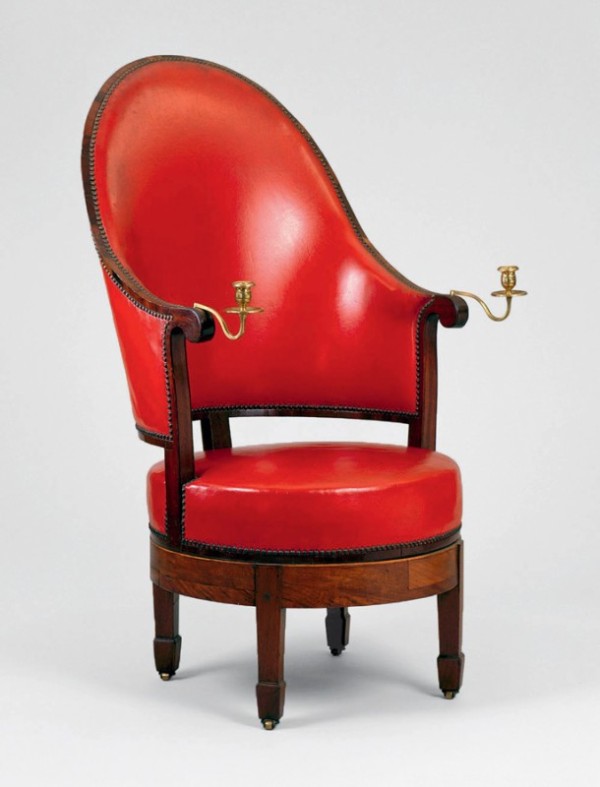
Thomas Burling, revolving chair, New York, 1790. Mahogany with white oak and chestnut; iron, brass, and leather (replaced). H. 48", W. 25 7/8", D. 31". (Courtesy, Thomas Jefferson Foundation at Monticello.) This image shows the chair as it appeared before conservation in 2021.
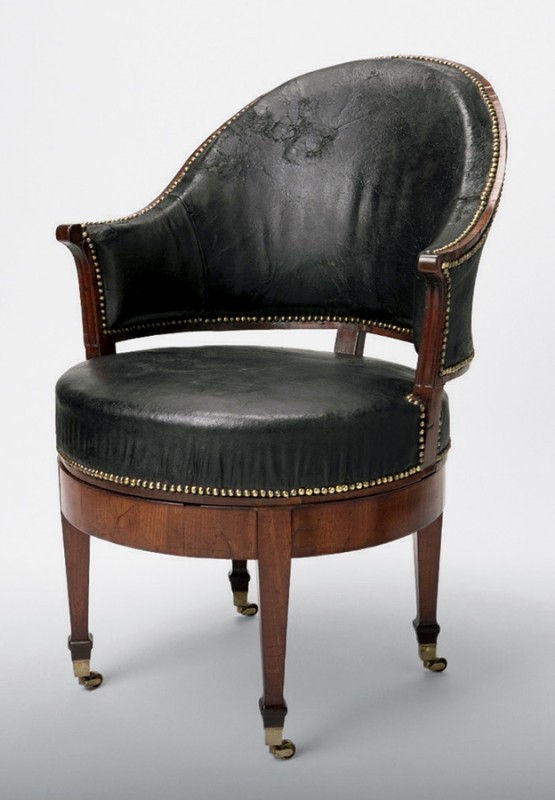
Thomas Burling, “uncommon chair,” New York, 1790. Mahogany with white oak; iron, brass, bone, and leather. H. 39 3/8", W. 27", D. 32". (Courtesy, Mount Vernon Ladies’ Association.)
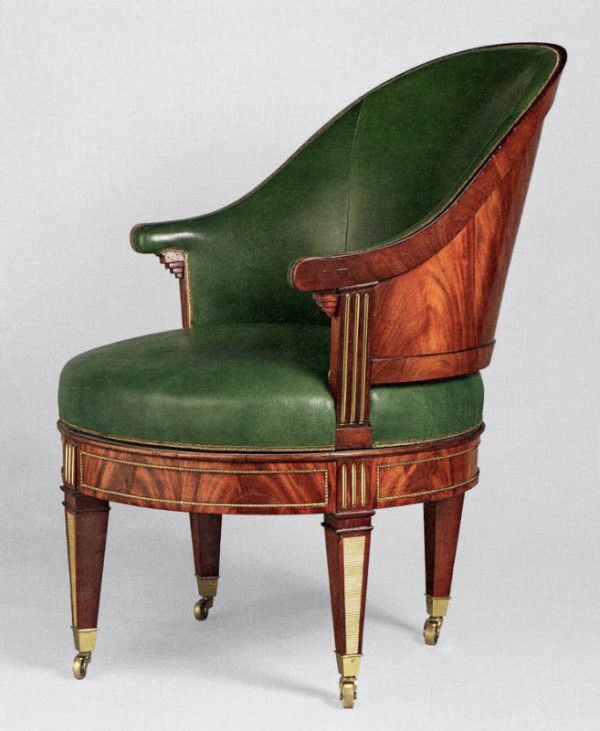
David Roentgen, fauteuil de bureau, Neuwied, Germany, 1783–1784. Mahogany and walnut; brass, iron, horn, and leather (replaced). H. 36", W. 31 1/4", D. 26 3/4". (Courtesy, Chatsworth House Trust.)

Thomas Jefferson’s writing group. (Courtesy, Thomas Jefferson Foundation at Monticello.) This pre-1924 photograph contains the earliest known image of Jefferson’s revolving chair.
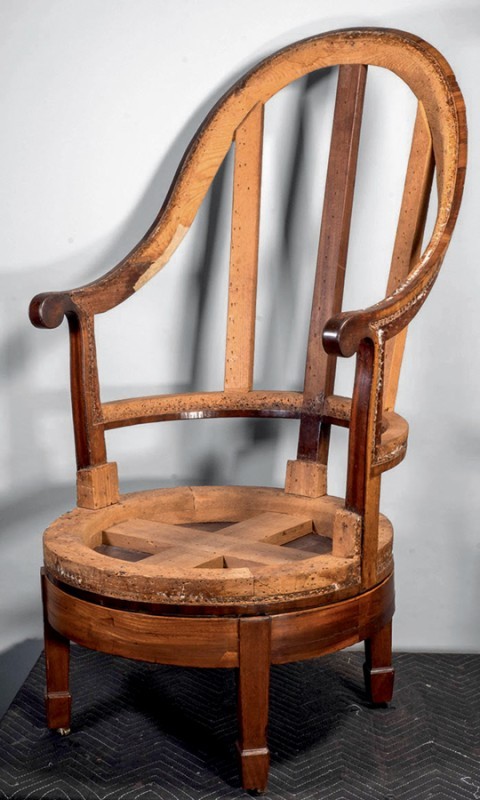
Revolving chair illustrated in fig. 1 after removal of modern upholstery materials. (This and all 2020–2021 photos of the Jefferson and Washington chairs, as well as conservation photos of the Jefferson chair, by Talitha Daddona or F. Carey Howlett of F. Carey Howlett and Associates unless otherwise specified.)
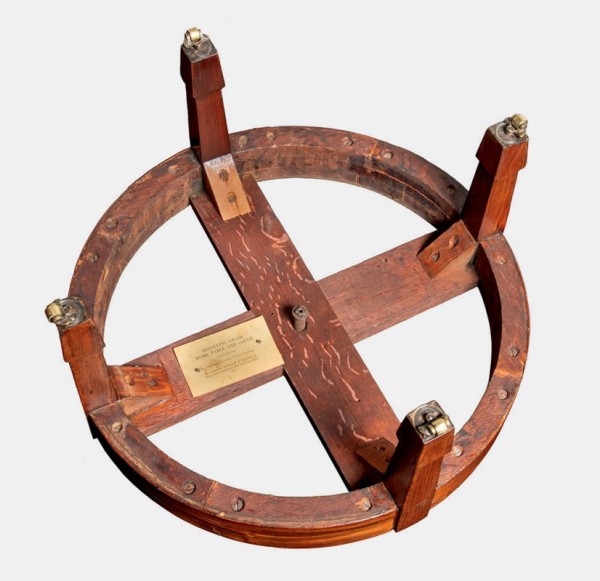
Underside of the base of Jefferson’s revolving chair showing cross-stretchers with central shaft of the swivel mechanism joined to the laminated circular seat rail. Later pine blocks reinforce the leg joints.
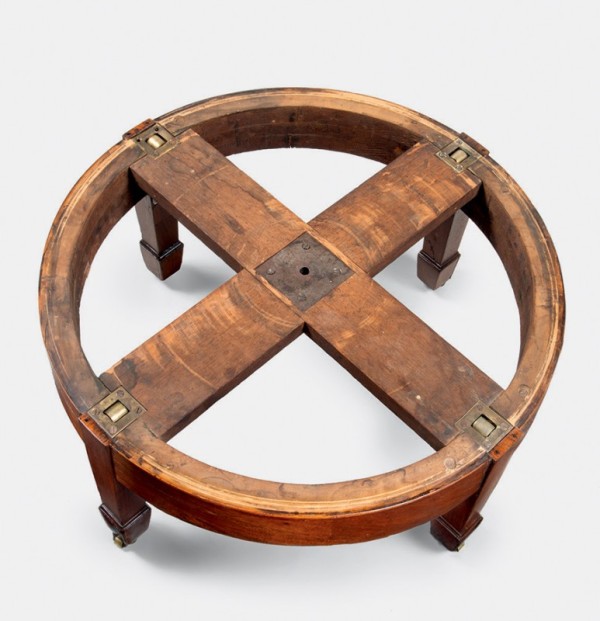
Upper surface of the base of Jefferson’s revolving chair showing the four inset brass rollers and the central plate forge-welded to the collet for the rotating shaft.
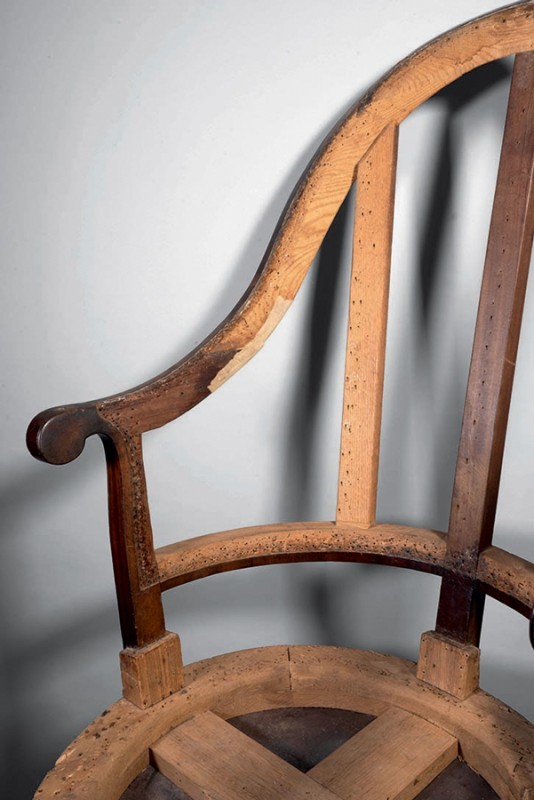
Detail of the frame of Jefferson’s revolving chair.
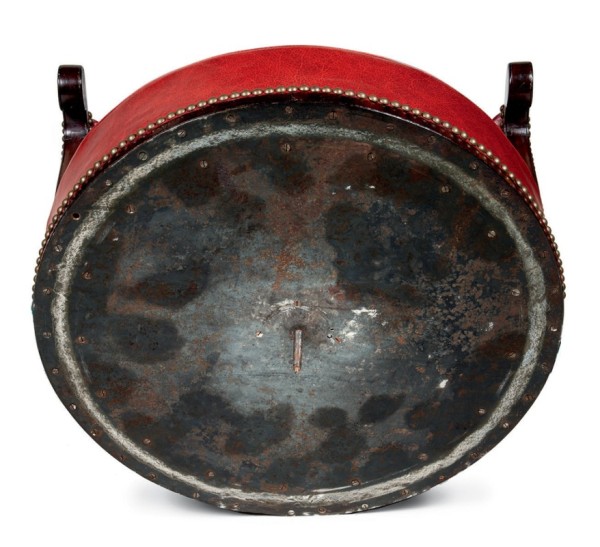
Detail showing the sheet steel plate secured with fifty-five screws to the bottom of the seat of Jefferson’s revolving chair.

Detail showing the square faceted nut used to secure the upper section of Jefferson’s revolving chair to its base.
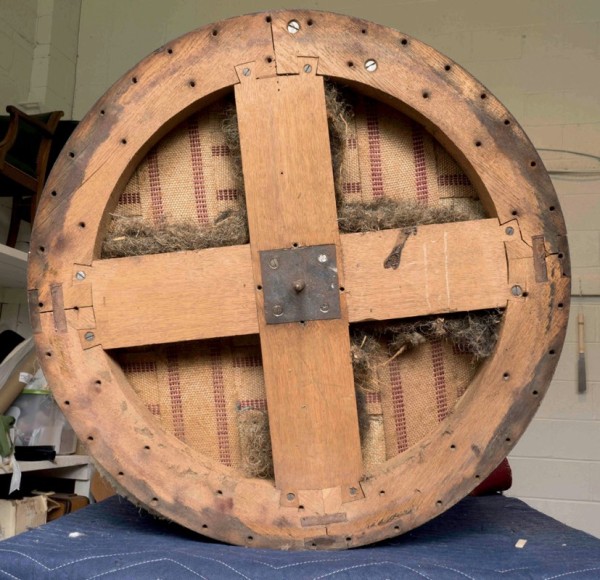
Detail showing the bottom of the chair seat with metal plate removed, revealing the dovetails joining the cross-stretchers to the circular seat frame.

Thomas Jefferson’s writing group, in a photo taken after 1925, showing the chair with plain textile upholstery. (Courtesy, Thomas Jefferson Foundation at Monticello.)

Detail showing glue-bound fibers of probable original leather above the veneer cross banding on the seat rail of Jefferson’s revolving chair.
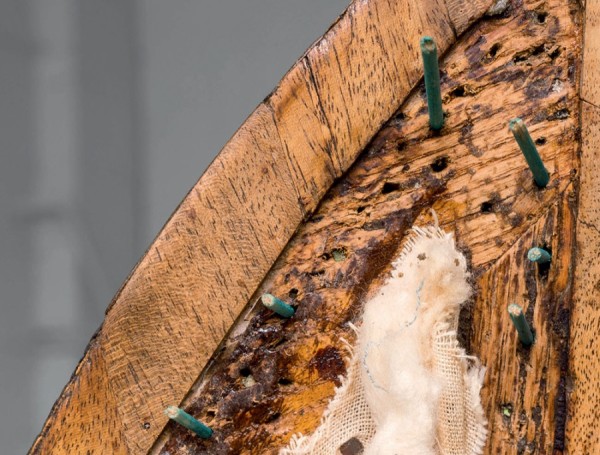
Detail showing the original brass nail pattern of Jefferson’s revolving chair, with square cast brass shanks remaining in some locations.

Detail of Jefferson’s revolving chair showing the oak nailing blocks that document the original seat height as well as the slope of the crown. The rear seat block is a half-inch lower than the side blocks, indicating a slight backward tilt to the original seat.
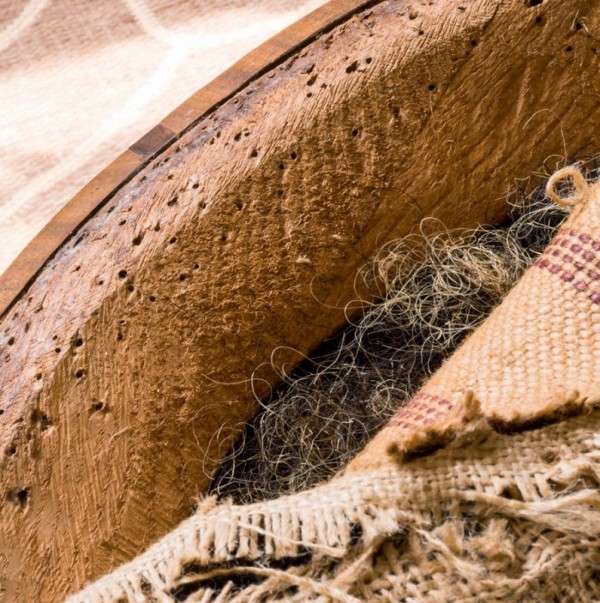
Detail showing the differences in rasp marks and wood coloration which indicate reshaping of the crest rail of Jefferson’s revolving chair. This alteration was probably associated with the later slimming of the back loft profile.

Close-up of the revolving chair from Jefferson’s writing group illustrated in fig. 4.
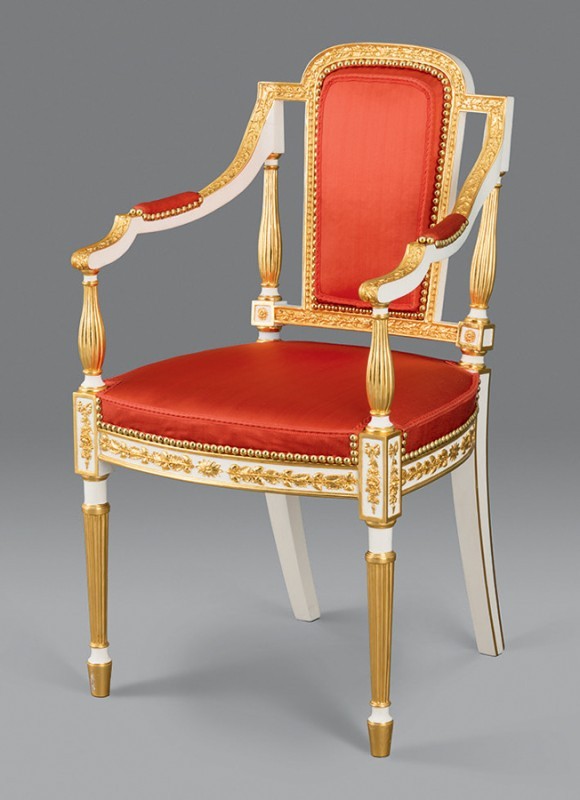
Armchair, Philadelphia, Pennsylvania, ca. 1790. Ash; paint, gesso, bole, gold leaf. H. 36", W. 20 1/2", D. 19". (Courtesy, Colonial Williamsburg Foundation.) The chair has its original foundation upholstery.

Detail showing the beveled boxed edge of Washington’s “uncommon chair.”
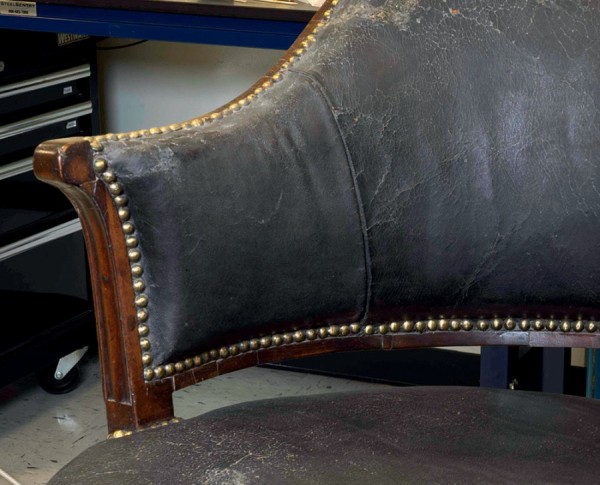
Detail showing the current seamed construction of the inner back of Washington’s “uncommon chair.”
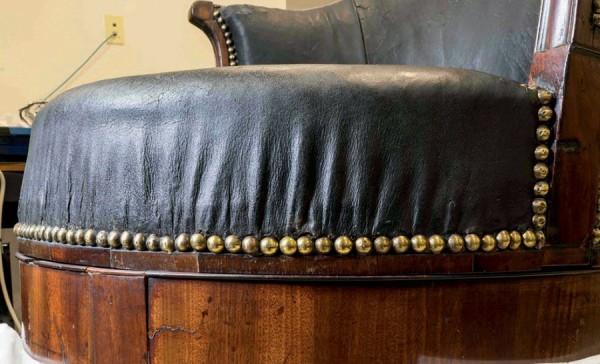
Detail showing the current profile of the one-piece leather seat of Washington’s “uncommon chair.”
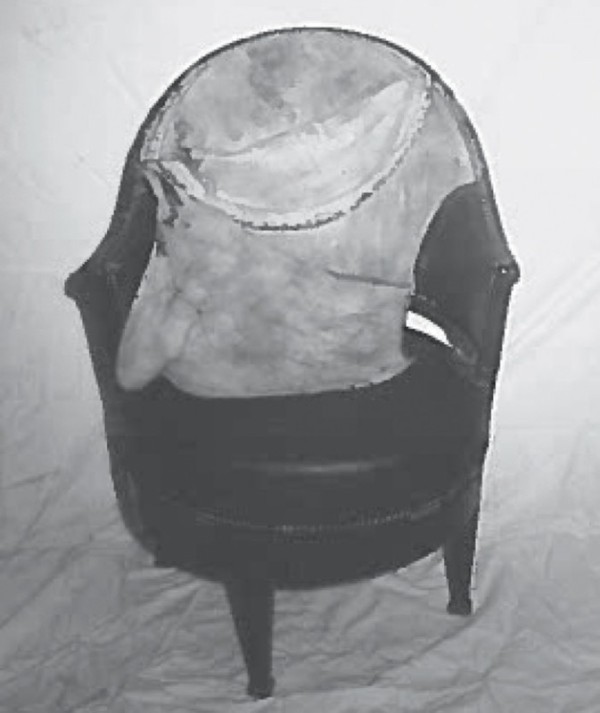
Photograph, ca. 1950s, of Washington’s “uncommon chair” showing leather and apparent twentieth-century cotton batting partially removed from the back. The crisp beveled boxed edge of the original foundation upholstery is visible.

Central hall, The Hermitage, Nashville, Tennessee, 1892. (Courtesy, Archives of the Andrew Jackson Foundation.)
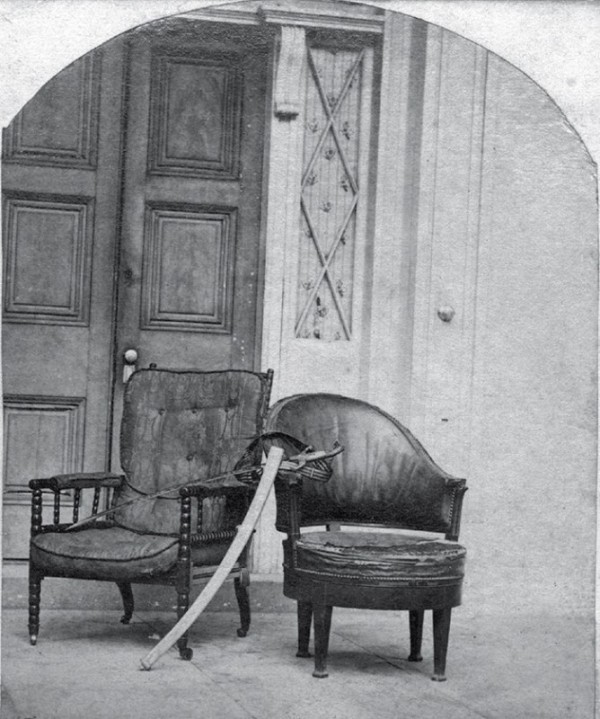
C. C. Giers, stereoscope image of Washington’s “uncommon chair,” The Hermitage, Nashville, Tennessee, 1867–1880. (Courtesy, Archives of the Andrew Jackson Foundation, po404a.)

C. C. Giers, stereoscope image of Washington’s “uncommon chair,” The Hermitage, Nashville, Tennessee, probably 1884. (Courtesy, Archives of the Andrew Jackson Foundation, 247-6.) The slipcover is visible in this image.
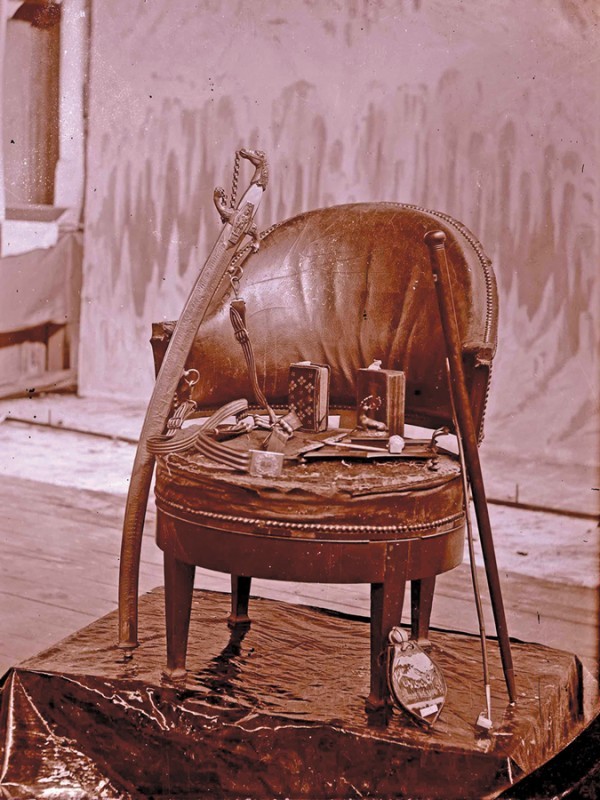
Stereoscope image of Washington’s “uncommon chair” with other artifacts, The Hermitage, Nashville, Tennessee, 1880–1885. (Courtesy, Tennessee State Library and Archives, #2081.)
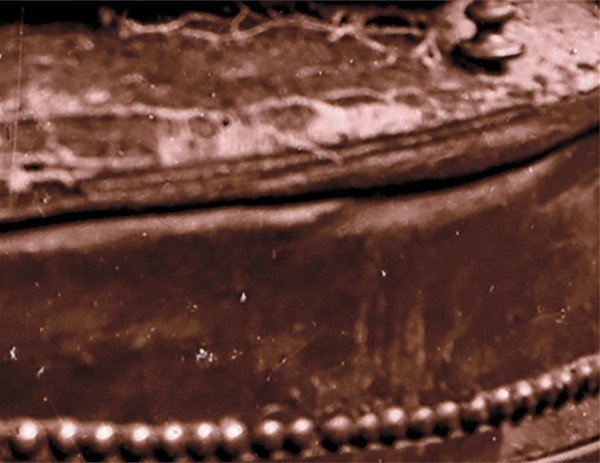
Detail of the stereoscopic image illustrated in fig. 26 showing the self-welted seam on the seat of Washington’s “uncommon chair.”
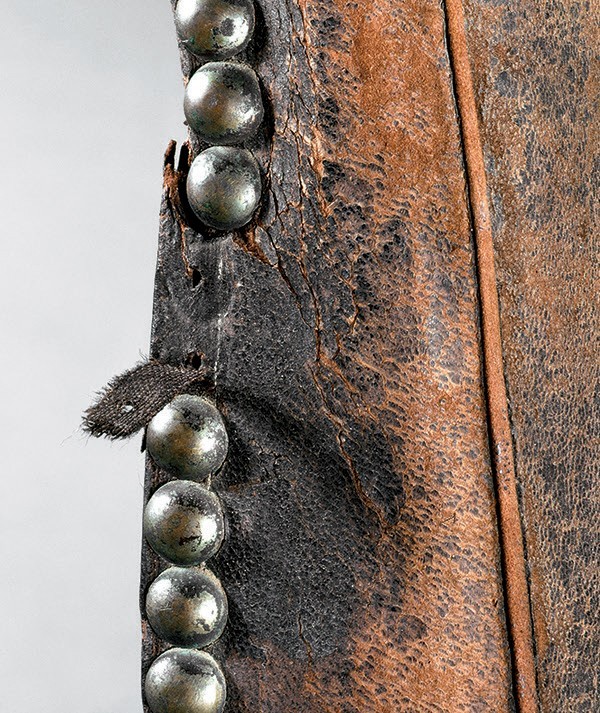
Detail of an original self-welted seam on a backstool, probably England, ca. 1765. (Courtesy, Colonial Williamsburg Foundation, acc. no. 1980-186.)

Detail of the stereoscopic image illustrated in fig. 26 showing a likely leather strip beneath a row of decorative brass nails on the inner chair back of Washington’s “uncommon chair.”
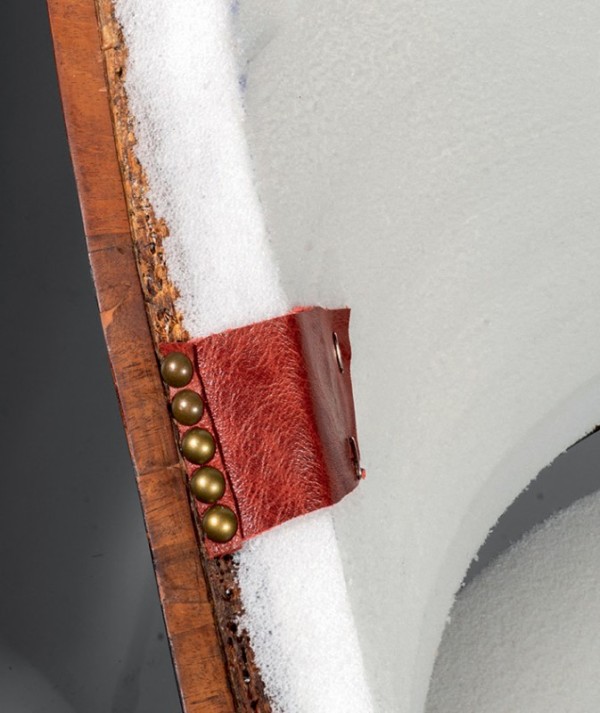
Mock-up of brass nails above the leather strip on Jefferson’s revolving chair.

Detail of the seat of Jefferson’s revolving chair.
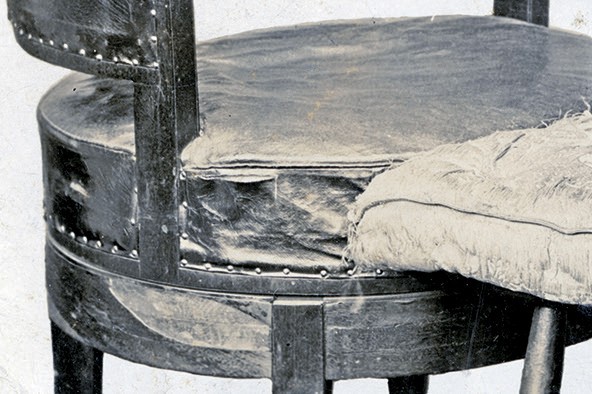
Detail of the seat of Washington’s “uncommon chair.”

Detail of the inner back profile of Jefferson’s revolving chair.
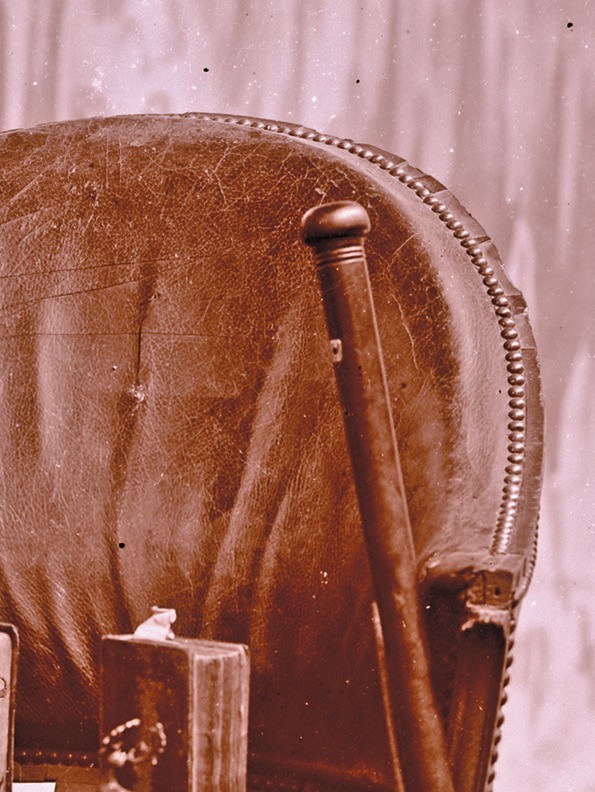
Detail of the beveled boxed edge on the inner back of Washington’s “uncommon chair.”
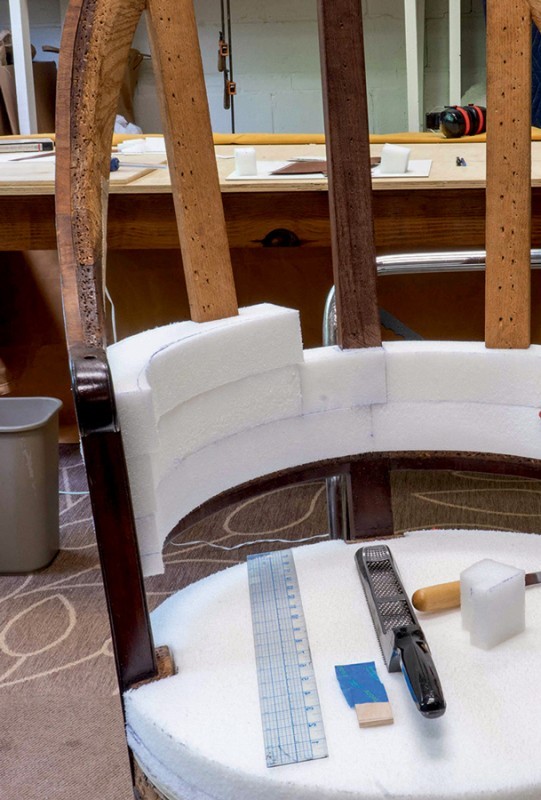
Stacked and friction-fit polyethylene foam simulating the likely original loft of the back of Jefferson’s revolving chair.
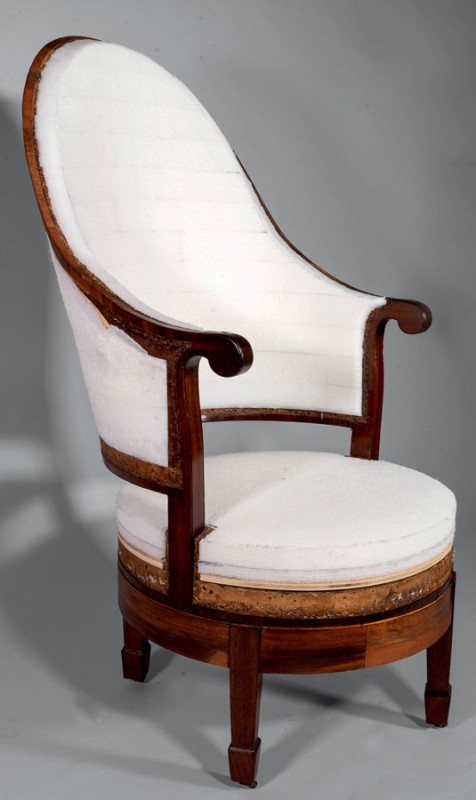
Sculpted foam foundation for the conservation upholstery of Jefferson’s revolving chair.
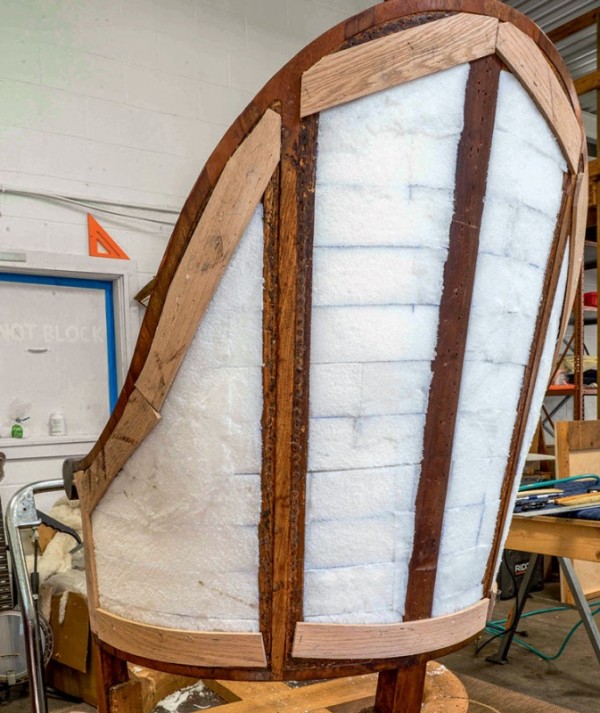
Temporary steam-bent oak nailers for pre-stretching leather on the inner back of Jefferson’s revolving chair.

Dampened and pre-stretched leather drying in place on Jefferson’s revolving chair.

Hook-and-loop fasteners placed on the beveled boxed edge of Jefferson’s revolving chair.

Mock-up of the self-welted seam for Jefferson’s revolving chair.
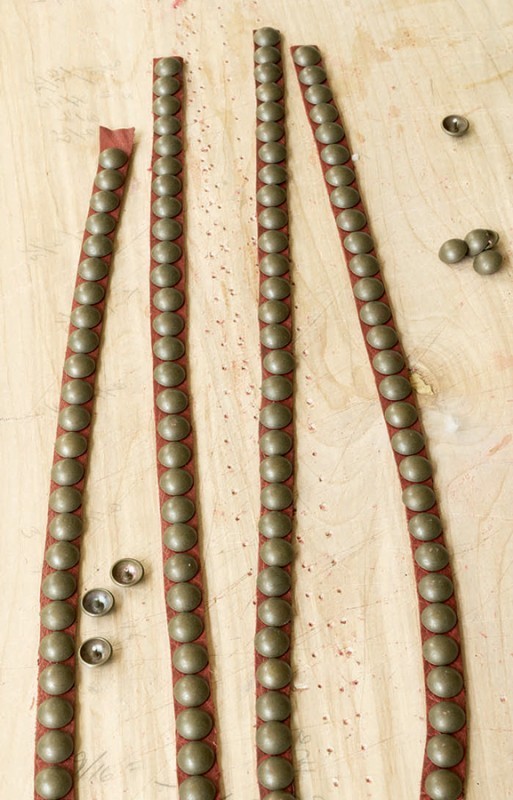
Brass upholstery nails were cut, riveted, and glued to leather strips before adhering them to Jefferson’s revolving chair.

Jefferson’s revolving chair after treatment, with conservation upholstery based on the physical, photographic, and documentary evidence discovered during research.

Side view of Jefferson’s revolving chair after treatment. Note that the brass candle arms visible in figure 1 are not longer present. These were probably placed in old holes in the chair in the 1960s. There is reason to believe the holes originally served another purpose perhaps to support a tray late in Jefferson’s life.

Rear view of Jefferson’s revolving chair after treatment.
